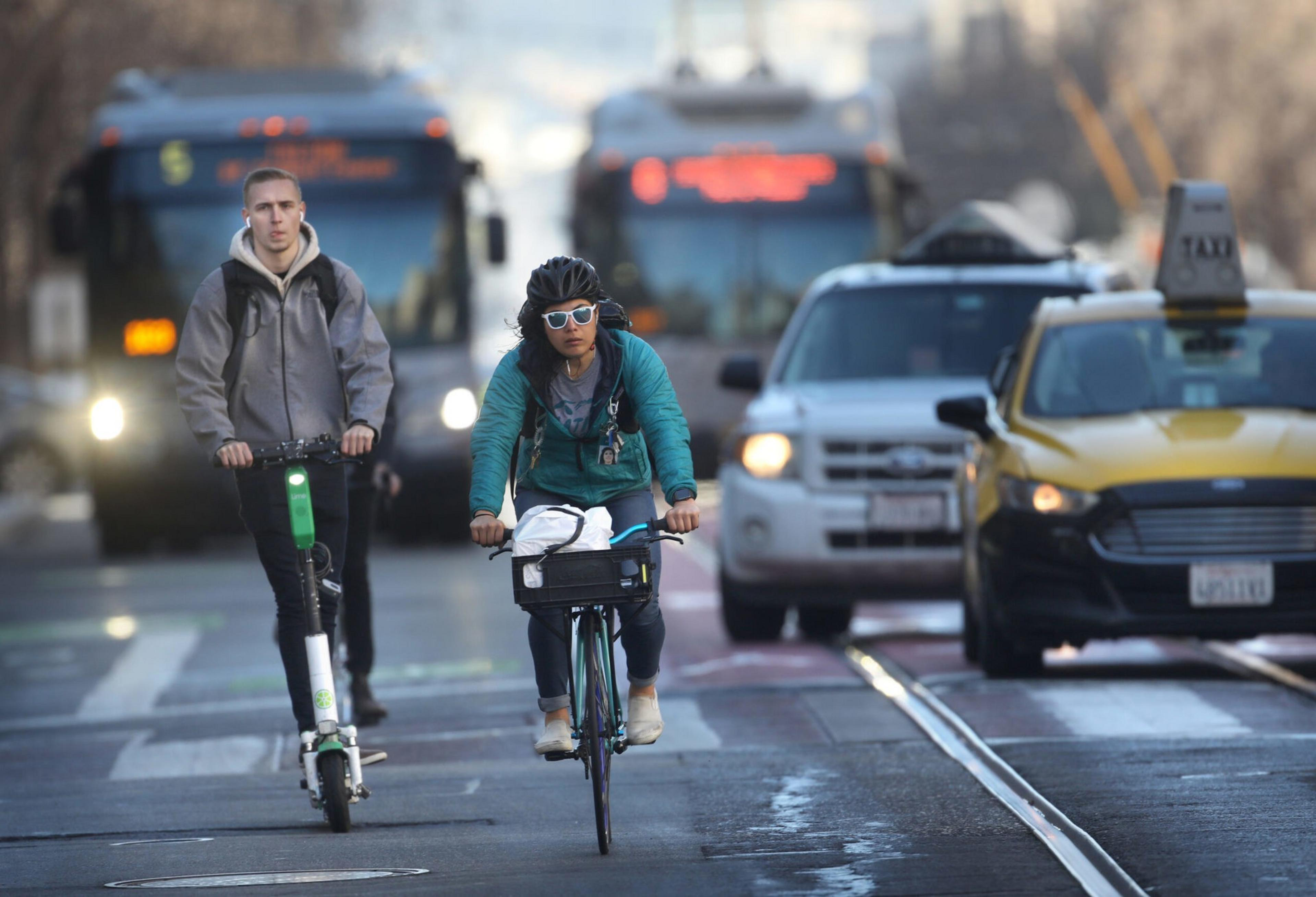Despite San Francisco’s stated commitment to ending traffic deaths, city data shows 2022 saw the most of any year since 2014, when the city launched its road safety program, Vision Zero.
Last year, 37 people were killed on San Francisco streets (opens in new tab), with many of those deaths occurring in and around the Tenderloin and the Mission. The second most deadly year was 2016, with 32 road deaths.
Most traffic-related fatalities in SF between 2014 and 2022 were pedestrians or people in vehicles—including on motorcycles—according to Vision Zero data.
The highest number of bicyclist deaths recorded were in 2015 and 2016, with four killed each year. In 2022 one bicyclist was killed.
A Standard examination of historical traffic collision data found that many of the most dangerous intersections are along Market Street and in the Mission.
READ MORE: Bicyclist Told He’s the ‘People That Should Die’ for Blocking SF Street
Traffic-related injuries most frequently occur in the Tenderloin, SoMa, the Mission and along Market Street, according to the High Injury Network, a city map of dangerous San Francisco streets.
Vision Zero SF, the city’s plan to end traffic deaths, put together the map (opens in new tab) and other data (opens in new tab).
Formed in 2014, the Vision Zero SF initiative aims to end traffic deaths by installing more protections for pedestrians and cyclists and is led by Mayor’s Office, the San Francisco Municipal Transportation Agency and the Department of Public Health.
Some Vision Zero initiatives include lowering the speed limit (opens in new tab) inside the Tenderloin to 20 mph and “quick build” projects adding protected bike lanes and speed bumps to certain roads.

Some quick-build proposals have been met with skepticism by local businesses and workers.
“In order to truly achieve Vision Zero […] we need to make it impossible to drive fast and recklessly,” bicyclist and community advocate Tim Courtney said. “The way to do that is with physical infrastructure and safe-street design, including concrete and separated, protected bike lanes.”
“These deaths and injuries are unacceptable and preventable, and San Francisco is committed to stopping further loss of life,” a spokesperson for the San Francisco Municipal Transportation Agency said. “Even as it is a difficult path, we know a lot about what the path looks like to achieve Vision Zero. We need streets that move people, not cars. And we need cars to slow down to save lives.”
The SFMTA spokesperson added that over the past five years the transit agency has repurposed dozens of travel lanes for people walking, biking and taking transit, built nearly 50 miles of protected bike lanes, slowed vehicle turns at hundreds of intersections, and added over 600 new speed bumps to San Francisco streets.
The Mayor’s Office and the health department were contacted for comment.
UPDATE 3:46 p.m.:
A spokesperson for the Mayor’s Office said: “We have made progress implementing the strategies we know can make it safer to travel on our streets, including creating more dedicated spaces for people to walk and bike, and reducing speed limits on key corridors. We have seen other policies fail to advance, including our attempts to allow for automated speed enforcement, to help bring speeds down in our neighborhoods, but we are going to keep trying to change laws that can save lives.”
An SF health department spokesperson said: “DPH’s primary role in Vision Zero is to provide data to inform city partners, public officials and stakeholders,” but did not provide further comment.
